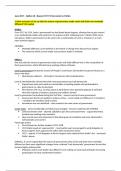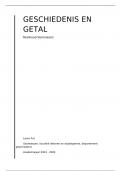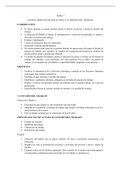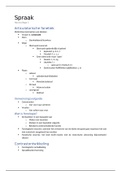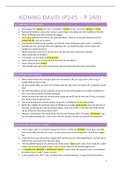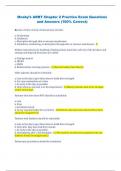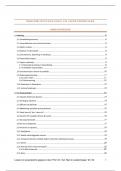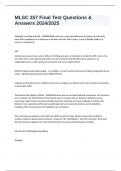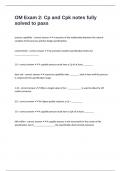field
1 Magnetism
The property by which some substances are attracted towards a magnet is called magnetism.
Such materials are called magnetic materials. The most familiar type of magnet which we
use is the bar magnet. It has two poles, the magnetic north pole and the magnetic south pole.
According to convention, the magnetic field lines come out of the north pole and go to the
south pole. Inside the magnet it goes from the south pole to the north pole.
It is a common experience that current carrying conductors produce magnetic effects around
them. In fact, this is the origin of all the magnetism we experience. Such magnetism producing
currents occur at an atomic scale.
Materials that exhibit magnetism are called magnetic materials. For example, iron, nickel,
cobalt etc.
2 The Magnetic field
The region where the effect of magnetism is experienced is often described by what we call
the magnetic field. It can be understood by the effect produced on a moving charge in a region
where magnetism is experienced.
The force on a charge q moving with velocity v in a magnetic field B is
F = q (v × B) (1)
This force is called the Lorentz force, and is directed perpendicular to both v and B.
Taking q = 1C, v = 1m/s, we see that |B| = |F|. Thus the magnitude of the magnetic field is
equal to the magnitude of force on a 1C charge moving at 1m/s velocity.
The unit of magnetic field is Tesla (T) or Weber/meter2 (W /m2 ). A more practical unit is
Gauss (G).
1G = 10−4 T (2)
The quantity B is called magnetic field, magnetic flux density, magnetic induction etc.
If we define magnetic lines of force, analogous to the electric lines of force in the electric field,
1
,B is the number of magnetic lines of force passing normally through unit area, and hence the
name magnetic flux density.If the magnetic flux is defined as Φ, then,
Z
Φ= B.dS (3)
Another quantity of interest is the magnetic field intensity or magnetizing field intensity H
defined as
B
H= (4)
µ
where µ is the permeability of the medium.The magnetic field intensity has the unit Ampere/m
(A/m). The free space value of permeability is µ0 = 4π × 10−7 H/m. The permeability of a
medium is related to the permeability of free space by the relation µ = µ0 µr , where µr is called
the relative permeability.
Thus we can write
B = µ0 µr H (5)
When an H field is applied on a material, the magnetic flux density B inside it depends on
the value of relative permeability µr . Substances are classified into diamagnetic, paramagnetic
and ferromagnetic depending on the value of µr . This is shown in the figure below.
2
, Thus, analogous to the expression D = εE in electrostatics, we have B = µH in magneto-
statics.
3 Motion of a Charged particle in Uniform Magnetic field
Consider a charged particle with charge q moving with a velocity v perpendicular to a uniform
magnetic field B (emerging out of the plane of the paper denoted by a dot in a circle). The
Lorentz force q(v × B) = qvB is always normal to v and B, so it deflects the particle with no
change in speed v. The particle will undergo circular motion perpendicular to the field. The
magnetic force supplies the centripetal force. Note that the magnetic force is directed towards
the center of the circle, whereas the centripetal force is pointed radially outwards. The particle
will move in the circle where the centripetal force equals the magnetic force.
The radius of the orbit can be found by equating the magnetic force to the centripetal force.
3

